 Cerro Rico, Potosi
Cerro Rico, PotosiOne phenomenon that becomes immediately obvious in both Central and South America - and I imagine in any developing county - is that safety standards are a heck of a lot lower than we are used to in the Western world. Machu Picchu in Peru was a case in point (see below) but nothing so far has been quite as hairy as my exploits the day after leaving La Paz.
While La Paz is the highest capital city in the world it is still several hundred metres below the highest city in the world - Potosi. Potosi today is a shadow of the city it once was. At one point, Potosi was one of the largest and richest cities in the world, larger even than London. This all came about as a result of the discovery of silver in the mountain that overlooks Potosi in the mid 1500s, around the time when the Spanish were conquering South America.
The Spanish were quick to exploit the huge potential of Potosi (basically the inside of the mountain was one giant lode of minerals) and they were willing to stop at nothing to get at the treasures.
Over the next two hundred years they extracted huge quantities of silver from the mountain. No-one knows exactly how much, but it is seriously suggested that enough silver was extracted to build a silver bridge from Potosi to Spain. The human cost of this industry was immense. When the poor air, poor safety standards and back-breaking work killed off thousands of local workers, the Spanish brought slave labour from Africa to replace them. Over those two hundred years, it is estimated that 8 million men died on and in the mountain at Potosi.
Amazingly, mining work goes on by hand today in the very tunnels built over 400 years ago. Even more amazingly a new industry has built up around this - tourism. Yes, believe it or not, tourists can go into the mines themselves and see the miners at work.
Despite vague memories of claustrophobic experiences in the past i donned a helmet and fetching overalls and went into the mine.

This was an experience never to be forgotten. After crawling through a couple of tunnels, myself, two others from the tour and our guide were right at the mine face, where the modern day miners worked in cramped conditions but with much better air quality than those of their 16th century counterparts.

As we crawled deeper into the mine, we passed through tunnels dating back to 1545. This tunnel was carved by hand by local workers at the hands of the Spanish. Who knows how many of the 8 million died building this very tunnel.
After about half an hour we met a miner who told us that we couldn´t go any further as they had just set dynamite charges in the next cavern. I couldn´t quite believe this was happening, but the ´excitement´ in our group was ´tangible´as we weighted for the 30 explosions to go off. If anyone is interested I can email you a short video in which you can hear the explosions going off, and see our reactions. The only thing you can´t experience is the smell of the dynamite and the shaking of the mine!!
After this I wasn´t surprised by anything. We proceeded to belowered 25m down a hole on a
 rope, scrambled up loose rock and through tiny openings, and I even helped with the mining operaton by pushing out a barrow of loose rock and carried a pneumatic drill into a tunnel for one of the miners. But when we came to a tunnel that had partially collapsed and had to change our planned route I was definitely ready to come back to the surface. Thankfully that was indeed right at the end of the tour.
rope, scrambled up loose rock and through tiny openings, and I even helped with the mining operaton by pushing out a barrow of loose rock and carried a pneumatic drill into a tunnel for one of the miners. But when we came to a tunnel that had partially collapsed and had to change our planned route I was definitely ready to come back to the surface. Thankfully that was indeed right at the end of the tour.Perhaps the most bizarre element of a visit to the mine is the purchasing of ´gifts´for the miners. As compensation for any disturbance caused to the miners by their visit, tourists are expected to offer the miners some offering. I purchased a goody bag that consisted off coca leaves (to make tea), coca cigarettes, a length of fuse, a small block of TNT and a starter cap containing nitro-glycerine.
 Those safety-standards in action!
Those safety-standards in action!
As much as I was excited and thrilled by my experience in the mine, I couldn´t help but think how horrendous the history of Potosi is and what a bleak story it tells about ´human endeavour´. And that is definitely reflected in the atmosphere of the town and the mines.
And that wasn´t the end of dangerous activities that day. In the afternoon, Ali and I took the seemingly safer and more sedate option of a trip to the thermal pools outside of Potosi. The picture below shows the pool created by the Incans 500 years ago to exploit the natural springs that come out of the ground at 25C. Unfortunately when we got there it had clouded over but we were determined to make the most of it and had a very enjoyable swim for about 30 minutes, at which point a large lightning flash directly overhead persuaded us to call it a day.

Hopefully the most dangerous day of my year´s travels is now past...



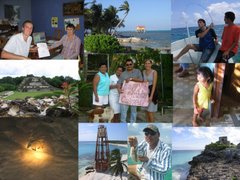
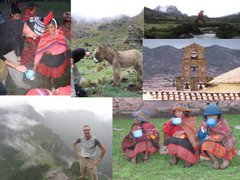
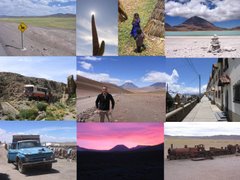
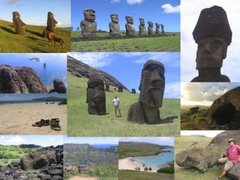
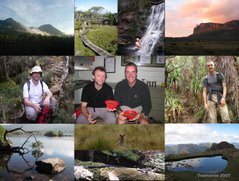
No comments:
Post a Comment